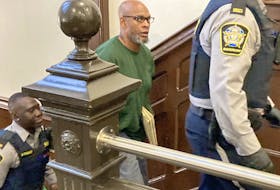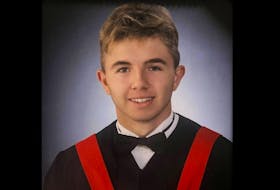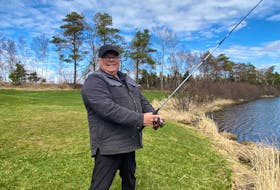The man who drove a rented van down Toronto sidewalks trying to kill as many people as he could has been found guilty of murdering 10 people and attempting to kill 16 more.
Judge Anne Molloy resoundingly rejected Alek Minassian ’s controversial defence that autism caused such mental deficits he did not know that mass murder was wrong.
Molloy accepted Minassian was capable of knowing right from wrong when he rented a large van and drove it for 1.2 kilometres along sidewalks of Yonge Street in north Toronto on April 23, 2018.
Prefacing her public reading of excerpts of her 68-page verdict, Molloy said she would not be saying his name during the hearing because Minassian told psychiatrists he committed the acts to attain notoriety.
She referred to him as “John Doe.”
“Mr. Doe thought about committing these crimes over a considerable period of time and made a considered decision to proceed. His attack on these 26 victims that day was an act of a reasoning mind, notwithstanding its horrific nature and not withstanding he has no remorse for it and no empathy for his victims,” Molloy said.
His attack on these 26 victims that day was an act of a reasoning mind
Minassian will automatically receive a life sentence — but it is not yet known if Molloy will issue consecutive or concurrent parole ineligibility periods for his multiple murders.
She could sentence him to a minimum of 25 years for each murder, meaning a potential, although symbolic, sentence of 250 years in prison. The issue of the constitutionality of consecutive sentencing is set to be addressed by the Supreme Court of Canada.
Robert Forsyth, whose 94-year-old aunt Betty Forsyth died after being hit from behind by Minassian, welcomed Molloy’s verdict of guilty.
“I’m happy with the decision, although it’s hard to use the word happy when you lose a loved one like this,” he said. “It was clear he knew what he was doing.”
Elwood Delaney, whose grandmother, Dorothy Sewell, was also killed in Minassian’s attack, was similarly satisfied with the verdict.
“I’m relieved that he was found guilty on all charges,” said Delaney, who watched the proceedings from his home in Kamloops, B.C., with his wife and oldest son. “We now can start to close this awful chapter and try to move on to a new norm.”
Minassian, 28, of Richmond Hill, Ont., was diagnosed with an autism spectrum disorder as a child. Facing overwhelming evidence that he deliberately perpetrated the van attack, his sole defence was a claim of being not criminally responsible for it due to a mental disorder.
It is a legal defence reserved for significant mental breaks that render an accused incapable of knowing or understanding what they were doing, or that it was morally wrong. It is what used to be called the “insanity defence.”
Autism had never before been argued in court in Canada as grounds for a not criminally responsible (NCR) verdict and Minassian’s claim drew condemnation from autism support groups.
In her written judgment, Molloy accepts autism could be a possible root for an NCR defence in theory, but not in this specific case.
“Everything depends on the particular circumstances of the individual and how they are affected by their disability,” she writes.
Autism support groups expressed relief the court did not accept Minassian’s defence that autism can be a reason or motivation for violent attacks.
“Autism does not predispose people to criminality, nor to the incapacity to make moral distinctions,” Dermot Cleary, Autism Canada chairman said after the verdict. “People on the Autism Spectrum are far more likely to be victims of violence than perpetrators of it.”
In her verdict, Molloy said that Minassian “knew that his plan to run down and kill people constituted first-degree murder and that if arrested, he would go to jail for the rest of his life. That is why his plan was to ‘die-by-cop.’ Death being preferable to jail.”
“Mr. Doe knew that the vast majority of people in society would find an act of mass murder to be morally wrong. However, he apparently wanted to achieve fame and notoriety, believing that even negative attention for his actions would be better than to live in obscurity.
“He had been fantasizing about a crime such as this for over a decade.”
Molloy emphatically rejected defence evidence of the impact of Minassian’s damaged mind.
Molloy found that Minassian “has significant deficits” because of his autism, particularly his social and emotional interactions and the ability to feel empathy. But he has no cognitive impairment. “He has been able to use his intellect to compensate for some of his impairments,” she writes.
“He chose to commit the crimes anyway, because it is what he wanted to do. This was the exercise of free will by a rational brain, capable of choosing between right and wrong. He freely chose the option that was morally wrong, knowing what the consequences would be for himself and for everybody else.
“It does not matter that he does not have remorse. Nor empathize with the victims.”
Minassian’s defence almost entirely rested with a single expert witness, Dr. Alexander Westphal, a U.S.-based psychiatrist who specializes in autism. Called by the defence, Westphal testified at length during the trial about the way autism interfered with Minassian’s ability to interact with the world.
Molloy largely dismissed his conclusions.
“There were many times in Dr. Westphal’s testimony when he appeared to be more of an advocate than an objective expert witness,” Molloy wrote.
“Dr. Westphal was not always objective in his approach to the issues and tended to cite only those things that supported his theory, ignoring things that contradicted it.”
After the verdict, Minassian’s lawyer, Boris Bytensky, said he has not yet discussed the possibility of an appeal of the verdict with his client.
“I think statistically the vast majority of people convicted of murder in this country do file appeals,” he said.
This isn’t just an ordinary case, even an ordinary murder case
He said he found Molloy’s choice to call his client “John Doe” in her decision unusual.
“I understand why she did that,” Bytensky said. “It is important to place this in context. This isn’t just an ordinary case, even an ordinary murder case. This is a case where somebody’s very clear motivation for doing these horrific acts was for infamy.”
Molloy delivered her judgment in a YouTube livestream because of COVID-19 health restrictions.
Minassian underwent several psychiatric assessments after his arrest, and most of his trial was hearing from four psychiatrists and a psychologist who examined him and had opinions on his mental status.
Six-weeks of evidence and arguments wrapped up just before the Christmas holidays, with Molloy saying she needed time to weigh the evidence and medical testimony before issuing her verdict.
All mental health assessors found that Minassian fantasized about mass murder and school shootings since he was in high school.
Testimony from other mental health assessors at trial did not support an NCR verdict.
Dr. John Bradford, a well-known forensic psychiatrist who has examined many of Canada’s most notorious killers, including Paul Bernardo, Robert Pickton, Russell Williams and Luka Magnotta, testified that he did not think autism alone could cause the level of mental disorder needed to trigger an NCR verdict.
Typically, NCR cases involve delusions and psychosis, and frequently involve a diagnosis of schizophrenia.
Dr. Scott Woodside, another forensic psychiatrist, described Minassian as a “mass murderer who happens to have autism” rather than a man whose autism drove him to mass murder. He also rejected the viability of an NCR verdict.
Minassian himself told Woodside: “I don’t think I was mentally ill at the time, to be honest,” court heard.
In her ruling, Molloy hailed the “heroes of that day,” including Toronto police Const. Ken Lam, who arrested Minassian despite Minassian’s attempt to provoke the officer to shoot him, and Det. Rob Thomas, who conducted an astounding interrogation of Minassian after the arrest.
She also praised citizens and officers who tried to stop Minassian’s van, warned others to get out of the way, and tended to the victims.
Killed in the Toronto van attack were: Renuka Amarasingha, 45; Andrea Bradden, 33; Geraldine Brady, 83; So He Chung, 22; Anne Marie D’Amico, 30; Mary Elizabeth (Betty) Forsyth, 94; Chul Min (Eddie) Kang, 45; Ji Hun Kim, 22; Munir Najjar, 85; and Dorothy Sewell, 80.
Minassian admitted he carefully planned his attack. The six-week trial heard his own, chilling admissions on how he deliberately drove onto the sidewalk, aiming for groups of people, preferably women, and only stopping when he could no longer see out of the windshield.
We now can start to close this awful chapter and try to move on to a new norm
Minassian said he had hoped to kill 100 people to achieve a world record tally but was satisfied with the 10 he did kill.
When he was asked by examining psychiatrists if he would do it again if he had the chance, he said he might, to get a higher kill count. Yet on the opening day of the trial, on Nov. 10, he declared: “I’m entering a plea of not criminally responsible for all counts.”
The case took on greater international attention, not only because of the number of victims, but because Minassian claimed he did it in support of an incel rebellion, a fringe ideology of men dangerously angry over their inability to attract sexual interest from women, its name a portmanteau of “involuntary celibate.”
At trial, court heard from psychologists that he backed away from that claim. While he had sympathy for incel ideas, frequented their online forums, and was somewhat obsessed with the godfather of incel violence, mass murderer Elliot Rodger, he was not a hardcore disciple.
He said he merely piggybacked on the incel brand to boost his notoriety and to make the reasons behind his attack seem more interesting than they were, which he variously listed as loneliness, wanting to be noticed, fear of failing at his new job, and a desire to get a high score on the Internet’s ranking of mass murderers posted in grim forums he frequented.
With files from Canadian Press
• Email: [email protected] | Twitter: AD_Humphreys
Copyright Postmedia Network Inc., 2021








